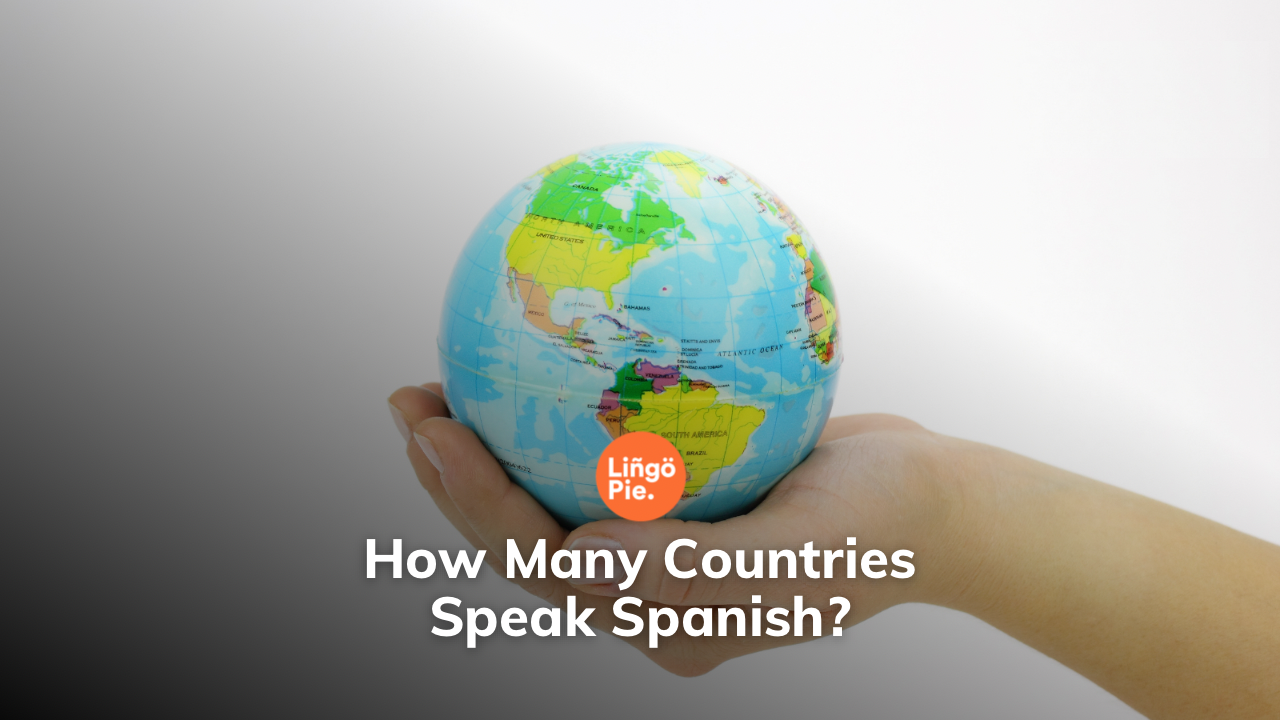Did you know that Spanish is one of the most widely spoken languages in the world? With over 480 million native speakers across more than 20 countries, it's no surprise that the Spanish language has taken on various forms and accents.
Just as English has different accents and dialects depending on the region or country, Spanish also has its own unique variations. And one of the most distinct and fascinating accents is the Mexican Spanish accent.
In this post, we'll go over the Mexican Spanish accents, exploring the different regional variations, linguistic influences, and cultural significance behind them. We highly encourage you to read on because this might just spark your interest to learn Spanish too!
- 26+ Easy Guatemalan Slang Every Expat Should Know
- 25 Dominican Slang Terms You Gotta Know
- How To Become Fluent in Spanish: 5 Best Tips [2025]

What Makes The Mexican Accent Different?
The Mexican Spanish accent is primarily characterized by its clear, measured pronunciation and relatively neutral intonation compared to other Spanish-speaking regions. This is why Mexican Spanish is often perceived as one of the most accessible regional variations to language learners.
Unlike the 'th' sound (ceceo) characteristic of certain Spanish regions, Mexican Spanish employs 'seseo,' pronouncing 'z' and 'c' before 'e' or 'i' as 's,' making words like "casa" (house) and "caza" (hunt) homophones. Additionally, syllable-final 's' is typically pronounced clearly, without the aspiration or elision common in Caribbean Spanish, resulting in a more deliberate and measured speech pattern.
Key distinguishing elements of the Mexican Spanish accent:
| Element | Mexican Feature | Contrast |
|---|---|---|
| Rhythm | Even-paced | vs. Spain's varied rhythm |
| Volume | Moderate | vs. Argentine louder speech |
| Pitch Range | Narrower | vs. Caribbean wider range |
| Stress Timing | Syllable-timed | vs. English stress-timing |
How is Mexican Spanish Different From Other Spanish Accents?
The first thing we need to know about Mexican Spanish is that it’s still Spanish. Most of the vocabulary is the same, and it operates under the same basic rules and logic.
Plus, it is no less correct than Peninsular Spanish (or “Castilian”). This variant (just like the people who speak it) has simply been shaped by 400 years of different influences.
When we compare Mexican Spanish to Peninsular Spanish, we can spot three main sources of differences. Let’s go over them one by one, from the smallest to the largest.
Grammar usage differences
Mexican Spanish doesn’t have different grammar rules as Peninsular Spanish. However, Mexican Spanish speakers often tweak these rules a little bit, or choose to say things differently.
First, they like to use undefined articles more often. Where a peninsular speaker would say “el lapicero” or “the pen”, Mexican speakers would gravitate towards “un lapicero” or “a pen”.
Next, they also like to ask questions in the negative. Take a look at the classic invitation to come upstairs for a nightcap. Most countries would use “Would you like a cup of coffee?” (¿Gusta pasar por una taza de café?).
But in Mexico, the default invite would be “¿No gusta pasar por una tacita de café?” or “Wouldn’t you like a cup of coffee?”
Why? In a way, it’s considered more polite. But doesn’t it make the coffee sound much more tempting?
Finally, Mexican Spanish speakers also like to keep the past simple – that is, to use the simple past instead of the present perfect. So this side of the Atlantic, expect to hear more “I ate everything” than “I have eaten everything.”
Intonation differences
If you were to hear a group of Mexican Speakers through a thick brick wall, you probably wouldn’t be able to make out what they’re saying. However, you’d be able to tell that they’re Mexican. Meanwhile, most Mexicans will be able to tell you which part of Mexico they’re from.
Depending who you ask, there are either four of seven distinct regional accents across Mexico.
Even if you are not very good with accents, you should be able to tell apart the melodies of:
- The “standard” Chilango accent, spoken in the capital and highlands around it
- The clipped coastal accent
- The northern drawl, from the regions closer to the United States
- The nahuatl-influenced Southeastern accent
If you are really into accents, check out the following compilation of people from all 32 Mexican States saying the same phrase:
Vocabulary differences
When it comes to Mexican Spanish peculiarities, their special vocabulary takes the cake. The country is infamous for its colorful slang expressions, which most Latin Americans know thanks to Televisa. However, they also have a lot of polite, yet uniquely Mexican, vocabulary that can easily confound newcomers.
Unlike Peninsular Spanish, the Mexican variant draws from two additional influences: nahuatl (the old Aztec tongue) and English, since the United States are right there.
Mexicans tend to be much more open than Spaniards to borrowing English words, and of keeping the English pronunciation of these loanwords. You can say something like “OK”, “cool”, or “miel de maple” (maple syrup) instead of the traditional “está bien”, “genial” or “miel de arce”.
They also adapted other verbs and gave them a Spanish conjugation, like checar (or to check, which would be revisar in Peninsular Spanish).
Meanwhile, you would be hard-pressed to discuss Mexican food without a few nahuatl words, like elote, aguacate, or petaca (that is, corn, avocado, or that little bottle that you use to sneak liqueur into a formal function).
How to Develop a Mexican Accent: A Step-by-Step Guide
Mastering the Mexican accent involves understanding its unique phonetic characteristics, rhythm, and cultural nuances. Follow these steps to develop an authentic and respectful Mexican accent.
Familiarize Yourself with Mexican Spanish Phonetics
Begin by understanding the specific sounds and pronunciations that distinguish Mexican Spanish from other dialects.
Vowels: Mexican Spanish vowels are pure and pronounced clearly, without the diphthongs common in English.
Pay special attention to:
- A as in "ah" (like in "father")
- E as in "eh" (like in "met")
- I as in "ee" (like in "see")
- O as in "oh" (like in "go")
- U as in "oo" (like in "moon")
Consonants:
- The R sound is trilled (rolling your tongue on the roof of your mouth) for words like perro (dog).
- The soft D sound often resembles a voiced th (as in "this") when placed between vowels, such as in cada (each).
- The H is always silent, as in hola (hello).
Practice the Trilled 'R' Sound
The trilled 'R' is a hallmark of Mexican Spanish and requires specific tongue placement and airflow.
- Steps to Practice:
- Place the tip of your tongue against the ridge behind your upper front teeth.
- Relax your tongue and blow air over it, allowing it to vibrate.
- Start with words like perro (dog) and carro (car), emphasizing the trilled 'R'.
Understand and Apply Syllable Stress
In Mexican Spanish, stress typically falls on the penultimate (second-to-last) syllable unless indicated by an accent mark.
Steps to Practice:
- Break words into syllables and identify the stressed syllable.
- Practice pronouncing words, emphasizing the correct syllable. For example:
- Casa (house) is pronounced CA-sa, not ca-SA.
- Comida (food) is pronounced co-MI-da.
Incorporate Common Mexican Expressions and Slang
Using regional expressions can enhance the authenticity of your accent.
Steps to Practice:
- Learn common phrases such as ¿Qué onda? (What's up?) and ¡Órale! (Alright!/Let's go!).
- Practice these expressions in context to understand their proper usage.
- Be mindful of the formality and appropriateness of slang in different settings.
For more Spanish words and expressions, check these out:
- 100 Common Spanish Words for Beginners
- 40 Easy Spanish Greetings You Must Learn in 2025
- 10+ Mexican Slang From The Streets
Why Learn Mexican Spanish?
Mexican Spanish is spoken by over 125 million people, making it one of the most common forms of Spanish in the world. So if you're looking for a language that lets you connect with many people, then learning Spanish is a practical option.
Here are other good reasons to convince you:
Cultural Connection
Mexico's cultural impact extends far beyond its borders, with its telenovelas (soap operas), movies, and music enjoyed by millions across Latin America and the world. In fact, Mexican entertainment companies like Televisa and TV Azteca are media giants, exporting their content globally.
By learning Mexican Spanish, you'll gain a deeper appreciation for the cultural nuances, humor, and expressions woven into this widely consumed media.
Widely Used
Mexican Spanish is the most widely spoken variety of Spanish in the Americas, with over 120 million speakers in Mexico alone. Its influence spans from the southwestern United States, where millions of Mexican-Americans reside, all the way down to Argentina and Chile.
Due to Mexico's geographic location and economic ties with other Latin American countries, its Spanish has become the lingua franca of the region.
Everyday Language
While textbook Spanish is useful for formal settings, Mexican Spanish reflects the vibrant, colloquial language used in everyday conversations. From voseo (using "vos" instead of "tú") to colorful Mexican slang like "¡échale ganas!" (give it your all), learning this variety exposes you to the authentic, living Spanish spoken by millions. This practical knowledge enhances your ability to communicate naturally with native speakers.
Job Opportunities
Mexico is an economic powerhouse, with the 15th largest economy in the world and a major trading partner of the United States. Countless multinational companies have operations in Mexico, seeking bilingual professionals fluent in Mexican Spanish. Whether in business, tourism, diplomacy, or other fields, this linguistic skill is highly valued and can open doors to exciting career opportunities.
Cultural Experience
Mexico has a very unique culture that blends indigenous traditions with Spanish influences. This rich mix can be seen in the language, food, art, and celebrations. By learning Mexican Spanish, you get to experience and understand Mexico's special cultural heritage.
For example, the language has words and sounds that come from indigenous languages like Nahuatl and Maya. And vibrant holidays like the Day of the Dead (Día de los Muertos) showcase the country's indigenous roots combined with Spanish traditions.
Mexican Slang 101
We couldn’t finish a blog post on Mexican Spanish without a compilation of their most popular slang terms.
- ¡Aguas!: Literally “Waters!”, but it really means “Watch out!”
- Wey: Just like chamaco, “dude”
- Naco and fresa: The two sides of the Mexican Social Force. Nacos are lower-class people or habits, while Fresa is anything bougie.
- ¡Qué padre! or ¡Qué chido!: So cool!
Does it look like we are missing something? Since our moms read this blog, we have steered clear of anything too R-rated.
Ready To Learn Spanish?
We could probably write an entire encyclopedia about Mexican Spanish words and slang (and someone has). But what exactly is the best way to learn how to use all these words naturally?
Answer: Just spend a few hours hearing the locals speak among themselves!
That's why at Lingopie, we have hundreds of hours of content that will let you do just that. Through our updated catalog of Netflix Selects and Lingopie Exclusives, you can binge-watch quality TV series and movies in Mexican Spanish, and more. Our dual subtitles will also help you learn Spanish online without even realizing it.
Want to give it a try? Sign up for our 7-day FREE trial today!
FAQs
Is Mexican Spanish the same as regular Spanish?
No, Mexican Spanish is not exactly the same as the Spanish spoken in Spain, which is often considered the "standard" form. While mutually intelligible, there are distinct differences in accent, vocabulary, and grammar between Mexican Spanish and Peninsular Spanish. Some key differences include:
- Accent and pronunciation variations
- Use of different slang and colloquial terms
- Different verb conjugations like voseo
- Influence of indigenous languages like Nahuatl on vocabulary
Should I learn Spain or Mexican Spanish?
When deciding whether to learn Spain Spanish or Mexican Spanish, consider your goals and location. Generally:
- In the U.S., Mexican Spanish is more commonly taught and useful for communicating with Spanish speakers from Mexico/Latin America.
- In Europe or if learning for travel to Spain, Peninsular (Spain) Spanish may be preferable.
However, the core grammar and vocabulary are largely the same between the two varieties. As a beginner, focus on learning fundamental Spanish skills first. You can then adjust to the specific accent/slang based on your needs. The most important thing is gaining solid comprehension and communication abilities.
Why do Mexicans speak Spanish differently?
Mexicans speak Spanish differently than Spaniards due to:
- Geographic separation from Spain over centuries
- Influences from indigenous languages
- Development of unique cultural traditions and identity


![How To Do The Mexican Accent [Complete 2025 Guide]](/blog/content/images/size/w1200/2024/06/Understanding-Mexican-Spanish-Accents.jpg)



![30+ Modern English Slang Terms For Money [Guide]](/blog/content/images/size/w300/2025/06/Slang-term-for-money.jpg)
![5 Official Spanish Language Tests To Show Your Proficiency Level [Guide]](/blog/content/images/size/w300/2025/06/Spanish-Language-Tests.jpg)

![Why Memorizing Spanish Words Won’t Make You Fluent [Tips]](/blog/content/images/size/w300/2025/06/how-to-practice-spanish-vocabulary.jpg)